Kelly Jensen's Blog, page 86
May 5, 2015
A School for Unusual Girls by Kathleen Baldwin
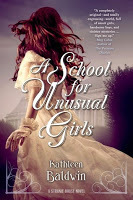 It’s 1814 in England, and young Georgie is being sent to a reform school after accidentally setting her family’s stables aflame. The fact that she didn’t do it on purpose and that it was all in the pursuit of science doesn’t seem to make a difference. She’s shipped off to Stranje House to be “fixed,” which means ridding her of any thoughts of being a scientist. Little do Georgie or her parents know that Stranje House is not a reform school at all, and the unusual girls sent there are groomed for very unusual activities indeed. Espionage, for example.
It’s 1814 in England, and young Georgie is being sent to a reform school after accidentally setting her family’s stables aflame. The fact that she didn’t do it on purpose and that it was all in the pursuit of science doesn’t seem to make a difference. She’s shipped off to Stranje House to be “fixed,” which means ridding her of any thoughts of being a scientist. Little do Georgie or her parents know that Stranje House is not a reform school at all, and the unusual girls sent there are groomed for very unusual activities indeed. Espionage, for example. While it takes Georgie a ridiculously long time to realize that the school is not what it seems (past believability), this is a really fun story. The main plot involves Georgie trying to develop an invisible ink that can be used by England to defeat Napoleon once and for all, and she’s got a dreamy young man assisting her. They butt heads a lot, which means there’s lots of lovely romantic banter (Baldwin also writes adult romance, and it’s evident). It’s clear that Georgie is the brains behind this endeavor, though. This is an historical novel that turns into alternate history near the end, which may surprise some readers already familiar with the end of Napoleon’s story. I know I sat back and thought “Wait…” for a few moments before I remembered that this was fiction and the author is free to change history if she likes. And she does. It actually makes me even more excited to read the next book.
This one can be added to my list of secret historical societies of teenage girls along with The Agency, Grave Mercy, and Maid of Secrets, and readers who enjoy the subversive nature of those stories should like this one as well.
Georgie and the supporting cast members are predominantly white, but one student who becomes part of Georgie’s circle of friends is of Indian descent. There are a couple missteps with the treatment of her character – she’s referred to as “exotic” and described using food adjectives. This could be partially explained as it being Georgie’s perspective, but it’s still lazy and could have been done better. Aside from being a really fun romance and adventure story, this is also a great story about friendship, and all of Georgie’s friends have distinctive personalities and an important role to play. Subsequent books in the series will each focus on a different girl, which again reminds me of Grave Mercy. If you liked Grave Mercy but are interested in something a little lighter, A School for Unusual Girls is a natural pick.
Review copy provided by the publisher.







 Related StoriesOn The Radar: 12 Books for MayIt's Prom Season: A YA Reading ListApril Debut YA Novels
Related StoriesOn The Radar: 12 Books for MayIt's Prom Season: A YA Reading ListApril Debut YA Novels
Published on May 05, 2015 22:00
May 4, 2015
Graphic Novel Roundup
Saturday was Free Comic Book Day, which is also known as "the only day out of the year Kimberly actually spends money on comics." It would seem to fly in the face of a day that celebrates free comics, but actually, buying from a comics shop is good practice for FCBD.
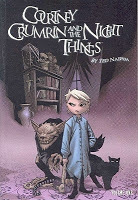
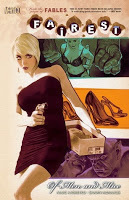
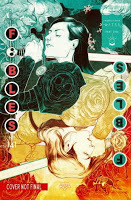
Courtney Crumrin vol. 1: The Night Things by Ted Naifeh
I kind of want to hug this book. I wavered between liking it and loving it after I first finished, but the more I think about it, the more I come down on the side of love. It's a book for kids that's also quite dark, but in a wry, wink-wink way that I adore. Courtney is a middle-schooler whose parents drag her to a new town to live with her creepy old uncle Aloysius in his creepy old house so they don't have to pay rent. Uncle A is more than he seems, of course, and he bonds with Courtney in a distant sort of way. This volume is a collection of short stories where Courtney gets up to things - things involving goblins and changelings and other nefarious magical beings. Courtney feels like a really authentic middle-schooler. She's surly and unpleasant, pouts a lot, and has trouble making friends. She's also independent and curious and smart. Naifeh pokes a lot of fun at Courtney's parents and others of their ilk, social climbers who love to spend other people's money, including Uncle A's. He also has no problem making children casualties of the night things, but it's never done to tug on your heartstrings - you'll likely laugh instead (and then feel a little bad about it, but not that bad).
Fairest vol. 4: Of Men and Mice by Chris Roberson and Shawn McManus
This installment of Fairest, the Fables spin-off that focuses on the female characters, takes place right after the end of the 20th Fables trade. This is important to know, since there's no preamble or recap and you're just thrust right into the thick of things, spoilers and all. That's fine for me - I had read the latest Fables fairly recently so it was fresh in my mind. What I was disappointed about, though, is that this was a Cinderella story. Cinderella has her own Fables spinoff where she goes on secret agent 007-style adventures, so I'm confused as to why this installment also focused on her. It also seemed like a bit of a rehash of the first Cinderella trade since it involved Cindy's maniacal fairy godmother (who is now more like a dotty old aunt you never liked, which is ok I guess, but also undoes a lot of the character development from previous volumes - more on this later). It also involves huge rats and Cindy's vengeful stepsister. So, lots of Cinderella backstory. It's not bad. I didn't love it. I keep trying to recapture the magic I felt when I first read Fables, and unfortunately this didn't do it. I would recommend it only for completists, probably, which I suppose is what I am. Despite the fact that at the beginning, Cindy is tied to a chair Black-Window-Avengers-movie-style, except for some reason she's only in her bra and panties. Sigh.
Fables vol. 21: Happily Ever After by Bill Willingham and Mark Buckingham
This is the penultimate trade of Fables and I really wanted to love it, but it traffics in a lot of what another reviewer called "assassination of character development." It undoes the growth between Snow White and Rose Red (throwing in what would otherwise be an interesting back-story, were it not completely out of the blue and contrary to their respective personalities) and retcons Bigby's character as well. It sets up a final showdown between the sisters for the last volume, which I can't say I'm excited about. I'll certainly still read it, but Fables was best for me in the beginning, apparently. Willingham does begin wrapping up some of the more minor characters' arcs with short-short stories (some only a single page) between issues. These are interesting but of varying quality. It's a disappointing last story arc, but it has extraordinary art (as always) and it's worth the read just to see how it all shakes out.







 Related StoriesGraphic Novel RoundupBandette by Paul Tobin and Colleen CooverPrincess Decompsia and Count Spatular by Andi Watson + A Special Bonus Comic!
Related StoriesGraphic Novel RoundupBandette by Paul Tobin and Colleen CooverPrincess Decompsia and Count Spatular by Andi Watson + A Special Bonus Comic!



Courtney Crumrin vol. 1: The Night Things by Ted Naifeh
I kind of want to hug this book. I wavered between liking it and loving it after I first finished, but the more I think about it, the more I come down on the side of love. It's a book for kids that's also quite dark, but in a wry, wink-wink way that I adore. Courtney is a middle-schooler whose parents drag her to a new town to live with her creepy old uncle Aloysius in his creepy old house so they don't have to pay rent. Uncle A is more than he seems, of course, and he bonds with Courtney in a distant sort of way. This volume is a collection of short stories where Courtney gets up to things - things involving goblins and changelings and other nefarious magical beings. Courtney feels like a really authentic middle-schooler. She's surly and unpleasant, pouts a lot, and has trouble making friends. She's also independent and curious and smart. Naifeh pokes a lot of fun at Courtney's parents and others of their ilk, social climbers who love to spend other people's money, including Uncle A's. He also has no problem making children casualties of the night things, but it's never done to tug on your heartstrings - you'll likely laugh instead (and then feel a little bad about it, but not that bad).
Fairest vol. 4: Of Men and Mice by Chris Roberson and Shawn McManus
This installment of Fairest, the Fables spin-off that focuses on the female characters, takes place right after the end of the 20th Fables trade. This is important to know, since there's no preamble or recap and you're just thrust right into the thick of things, spoilers and all. That's fine for me - I had read the latest Fables fairly recently so it was fresh in my mind. What I was disappointed about, though, is that this was a Cinderella story. Cinderella has her own Fables spinoff where she goes on secret agent 007-style adventures, so I'm confused as to why this installment also focused on her. It also seemed like a bit of a rehash of the first Cinderella trade since it involved Cindy's maniacal fairy godmother (who is now more like a dotty old aunt you never liked, which is ok I guess, but also undoes a lot of the character development from previous volumes - more on this later). It also involves huge rats and Cindy's vengeful stepsister. So, lots of Cinderella backstory. It's not bad. I didn't love it. I keep trying to recapture the magic I felt when I first read Fables, and unfortunately this didn't do it. I would recommend it only for completists, probably, which I suppose is what I am. Despite the fact that at the beginning, Cindy is tied to a chair Black-Window-Avengers-movie-style, except for some reason she's only in her bra and panties. Sigh.
Fables vol. 21: Happily Ever After by Bill Willingham and Mark Buckingham
This is the penultimate trade of Fables and I really wanted to love it, but it traffics in a lot of what another reviewer called "assassination of character development." It undoes the growth between Snow White and Rose Red (throwing in what would otherwise be an interesting back-story, were it not completely out of the blue and contrary to their respective personalities) and retcons Bigby's character as well. It sets up a final showdown between the sisters for the last volume, which I can't say I'm excited about. I'll certainly still read it, but Fables was best for me in the beginning, apparently. Willingham does begin wrapping up some of the more minor characters' arcs with short-short stories (some only a single page) between issues. These are interesting but of varying quality. It's a disappointing last story arc, but it has extraordinary art (as always) and it's worth the read just to see how it all shakes out.







 Related StoriesGraphic Novel RoundupBandette by Paul Tobin and Colleen CooverPrincess Decompsia and Count Spatular by Andi Watson + A Special Bonus Comic!
Related StoriesGraphic Novel RoundupBandette by Paul Tobin and Colleen CooverPrincess Decompsia and Count Spatular by Andi Watson + A Special Bonus Comic!
Published on May 04, 2015 22:00
May 3, 2015
On The Radar: 12 Books for May
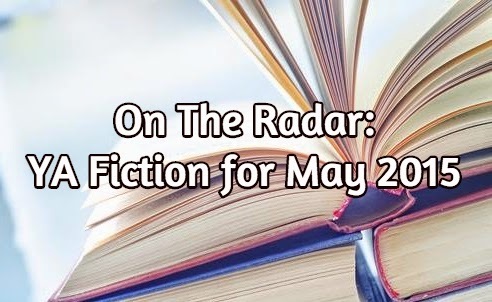
One of the most popular posts I do over at Book Riot is the round-up of upcoming YA fiction titles, and one of the most popular questions I seem to get on Twitter and in my inboxes is "what should I be looking out for in YA?" For a lot of readers, especially those who work with teens either in classrooms or in libraries, knowing what's coming out ahead of time is valuable to get those books into readers' hands before they even ask.
Each month, I'll call out between 8 and 12 books coming out that should be on your radar. These include books by high-demand, well-known authors, as well as some up-and-coming and debut authors. They'll be across a variety of genres, including diverse titles and writers. Not all of the books will be ones that Kimberly or I have read, nor will all of them be titles that we're going to read and review. Rather, these are books that readers will be looking for and that have popped up regularly on social media, in advertising, in book mail, and so forth. It's part science and part arbitrary and a way to keep the answer to "what should I know about for this month?" quick, easy, and under $300 (doable for smaller library budgets especially).
For May, here are 12 titles to have on your radar. All descriptions are from WorldCat, and I've noted why it should be included.
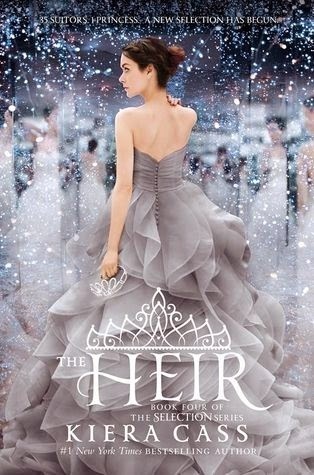
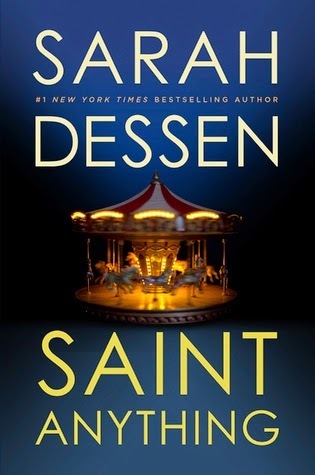
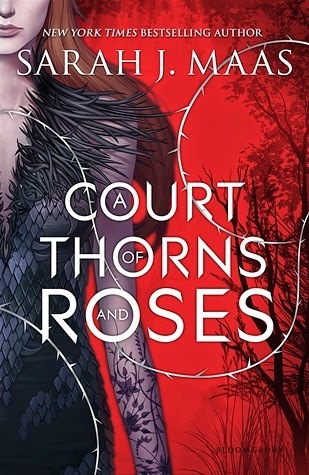
The Heir by Kiera Cass: Twenty years ago, America Singer entered the Selection and won Prince Maxon's heart. Now the time has come for Princess Eadlyn to hold a Selection of her own. Eadlyn doesn't expect her Selection to be anything like her parents' fairy-tale love story ... but as the competition begins, she may discover that finding her own happily ever after isn't as impossible as she's always thought.
Why: It's the fourth book in the incredible popular "Selection" series.
Saint Anything by Sarah Dessen: Sydney's charismatic older brother, Peyton, has always been the center of attention in the family but when he is sent to jail, Sydney struggles to find her place at home and the world until she meets the Chathams, including gentle, protective Mac, who makes her feel seen for the first time.
Why: Sarah Dessen is a staple in YA, and her new book is no exception.
A Court of Thorns and Roses by Sarah J. Maas: Dragged to a treacherous magical land she only knows about from stories, Feyre discovers that her captor is not an animal, but Tamlin, a High Lord of the faeries. As her feelings toward him transform from hostility to a fiery passion, the threats against the faerie lands grow. Feyre must fight to break an ancient curse or she will lose Tamlin forever.
Why: Maas's other series, "Throne of Glass" has been extremely popular. This book is the launch of a new series. I received a couple review copies of it, so I know it's getting a big push, too.
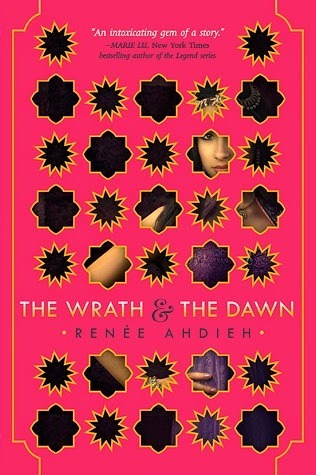
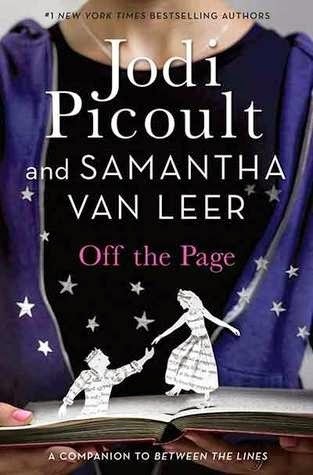
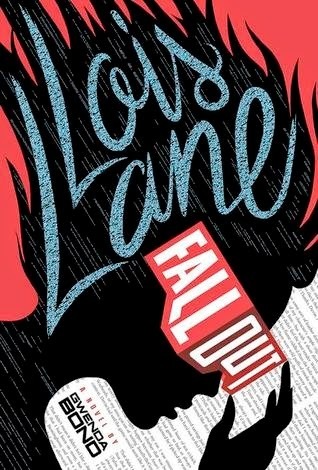
The Wrath and The Dawn by Renee Andieh: In this reimagining of The Arabian Nights, Shahrzad plans to avenge the death of her dearest friend by volunteering to marry the murderous boy-king of Khorasan but discovers not all is as it seems within the palace.
Why: A retelling of 1001 Nights, and it's been getting really positive buzz.
Off The Page by Jodi Picoult and Samantha Van Leer: When Delilah is united with Oliver, a prince literally taken from the pages of a fairytale, the line between what is on the page and what is possible is blurred, and all must be resolved for the two to live happily ever after.
Why: Though I don't know how well Picoult's previous YA novel did, there's name recognition here, and teens and adults will want to be picking this up (bonus: it's partially illustrated).
Lois Lane: Fallout by Gwenda Bond: Lois Lane is the new girl at East Metropolis High, and her instinct to ask questions brings her and her online friend, Smallville Guy, into conflict with some bullying video gamers called the Warheads, who are being used in a dangerous virtual reality experiment.
Why: Lois Lane gets a YA backstory! I can't wait to read this one myself, and I suspect it'll be a hit, especially with comics fans who want to pick up a novel about a character who hasn't been given a lot of her own story.
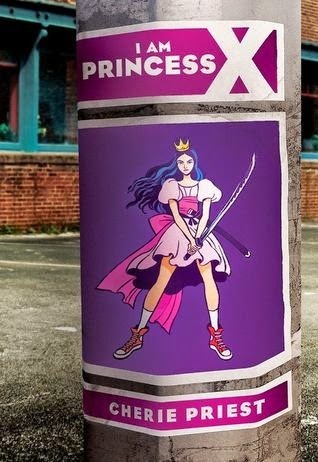
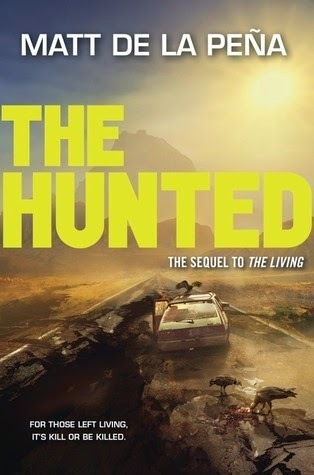
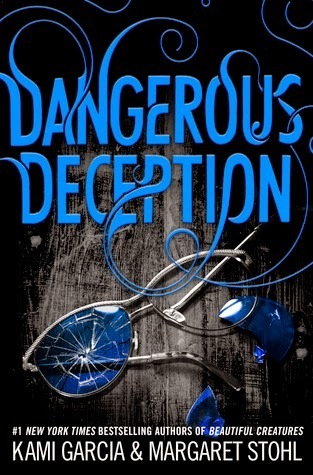
I Am Princess X by Cherie Priest: Years after writing stories about a superheroine character she created with a best friend who died in a tragic car accident, 16-year-old Libby is shocked to see stickers, patches and graffiti images of the superheroine appearing all over town.
Why: I've not read this myself, but it has received tremendous positive buzz and a few starred reviews.
The Hunted by Matt de la Pena: After surviving the earthquake and tsunami, Shy manages to make it back to land but he is far from safe because a secret his cruise ship co-worker, Addie, shared with him is one that people have killed for, and now that Shy knows, he has become a moving target.
Why: It's the sequel to The Living, a dystopia. Plus, it's Matt de la Pena and he's one you always should have on shelf.
Dangerous Deception by Kami Garcia and Margaret Stohl: When Ridley goes missing after a car crash, Link, his bandmates, and Lennox Gates, joined by Liv and John Breed, embark on a search for the Siren, taking them to Mississippi, where they encounter legendary blues guitarist Robert Johnson, and then to New Orleans, where an evil threatens to destroy them all.
Why: This is the sequel to Dangerous Creatures, the second series by Garcia and Stohl.
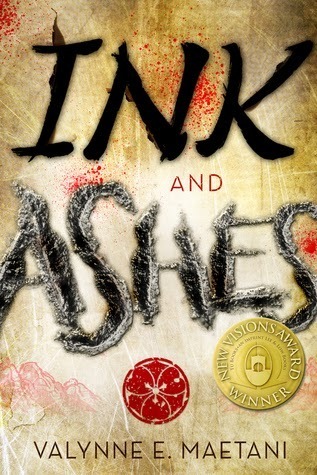
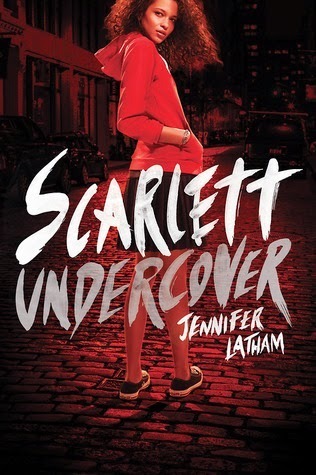
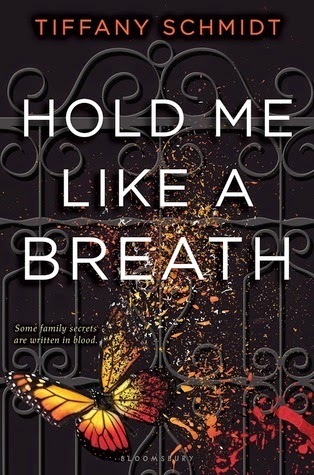
Ink and Ashes by Valynne E. Maetani: Claire Takata has never known much about her father, who passed away when she was a little girl. But on the anniversary of his death, not long before her seventeenth birthday, she finds a mysterious letter from her deceased father, addressed to her stepfather. Claire never even knew that they had met.
Claire knows she should let it go, but she can’t shake the feeling that something’s been kept from her. In search of answers, Claire combs through anything that will give her information about her father . . . until she discovers he was a member of the yakuza, the Japanese mafia. The discovery opens a door that should have been left closed.
So begins the race to outrun his legacy as the secrets of her father’s past threaten Claire’s friends and family, newfound love, and ultimately her life. (via Goodreads)
Why: Out from Tu Books, this won their annual "New Visions" award for a debut author. A diverse mystery hurts no one.
Scarlett Undercover by Jennifer Latham: Scarlett, a sixteen-year-old private detective in the fictional city of Las Almas, finds herself at the center of a mysterious case--involving ancient curses, priceless artifacts, and jinn--as she discovers that her own family secrets may have more to do with the situation than she thinks.
Why: Speaking of diverse mysteries, I devoured this one when I read it last month. It's very Veronica Mars in tone and voice, and Scarlett is a Muslim American, and this does play a big part in her story in a way we don't get to see enough of in YA.
Hold Me Like A Breath by Tiffany Schmidt: Penny Landlow, seventeen, the overprotected daughter of a powerful crime family, has rarely left the family estate due to a blood disorder but when tragedy strikes and she is left alone in New York City, she must prove she is not as fragile as everyone believes.
Why: This thriller is a retelling of "The Princess and the Pea" with organ trafficking. It's the first in a new series and readers will dig the twist on the tale. This is a fun one.







 Related StoriesIt's Prom Season: A YA Reading ListApril Debut YA NovelsThree Quick Reviews + a free TLA Program
Related StoriesIt's Prom Season: A YA Reading ListApril Debut YA NovelsThree Quick Reviews + a free TLA Program
Published on May 03, 2015 22:00
April 29, 2015
Getting Things Done with Bullet Journaling
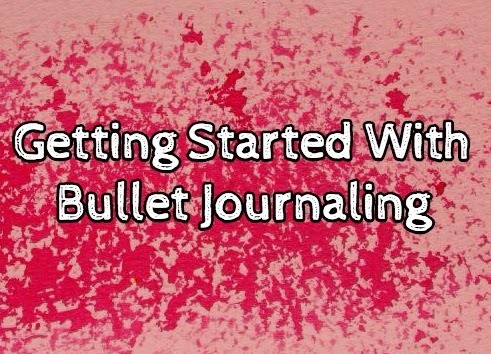
Taking a day away from talking about books and reading to instead talk about the art and science behind how I get organized and stay productive. Part of it is being inspired by folks like Jane from Dear Author who talked about this at the start of the year, and part of it is that I've really taken to bullet journaling and have had a number of people talk about how they want to get into it and don't understand how it works.
I've always been a list keeper. I have notebooks upon notebooks of to-do lists, stretching back to college and earlier. They're still sitting in boxes and in closets around the house, in the event I need to do something like see where I was in wedding planning back in 2006. Just incase, I guess. I've kept a notebook of every book I've finished reading since 2000, which sits on the book case in my living room.
When I worked outside of the house, I kept numerous notebooks for lists. Some were for work. Some were for inspiration. Some were for random note taking. For a few years -- recent ones -- my list keeping and note taking got out of control. I not only had numerous notebooks going, but I also became an unabashed post-it note user. The great thing about post-its is how easy they are to move around, put into notebooks, rearrange, and, as it turns out, throw away. Where I cannot get rid of a notebook with lists, tossing a post-it of tasks I've completed away felt like an accomplishment. I enjoyed that.
The downside to throwing out post-its, though? Not being able to see at a glance what sorts of productivity I can achieve within a certain time frame. Am I getting ten things done a day? Three things done a week? What sort of long-term projects require weeks, instead of an hour? Quantifying productivity with post-its and numerous journals just doesn't work for me.
Enter bullet journal.
If you're not familiar with the bullet journal, take the three minutes to watch the video which gives an overview of the theory and system:
After watching this, I had more questions than answers. It felt overcomplicated for my own needs while also feeling too simple. Can I really keep numerous lists in one place? Why do I need multiple calendars within the journal? Do I need the journal AND a calendar? Will it make sense to mix up my work-related tasks with my personal tasks? Blog tasks? How will I make sense of all the little symbols and notations?
In short, I watched the video and felt like it was a lot to take in. But I wanted to try it anyway.
A little bit of backstory here: I noted being a journal and note book nerd, but I didn't mention the level to which this exists. Back in the glory days of Livejournal, I was a member of numerous notebook and journaling communities, and even after, I connected with many folks who were into that, too. Is there something more nerdy than talking about how you journal or stay productive? About what kinds of pens you prefer? About where to score really great notebooks (...and yes, I have preferences on the note books I use and for what purpose)? I knew there'd be people out there showing off how they bullet journal, and while there are some great examples on Tumblr, I knew where the gold mine would be: Pinterest.
Here's a quick and dirty set of search results for "bullet journal" on Pinterest. While many follow the formula of the original, many diverge. If you spend some time digging around through people's posts, you'll find so many variations on the standard bullet journal, and it was through a few hours of time, I was able to cobble together a system that absolutely, positively works for me.
Yes, I am 100% analog in my tasking and I foresee this being the case for a long time. I am better at remembering things when I write them down than I am keeping them in my head or on a digital calendar or document. I have no more post-it notes in my life, and I keep only two notebooks now. One is for almost everything I do (that's the bullet journal), while the second is my notebook for keeping track of work scheduling of social media, meeting notes, and generally uncategorizeable note taking. I use a large Moleskine with a grid format for the journal, while I use a Chronicle journal for my note taking (this one right now). I am very, very committed and devoted to both of those products for those very specific reasons. It's partially about size, portability, and quality. Likewise, they sit together neatly on a shelf when I am finished with them, which is important, since I refer back to many of the note-taking notebooks frequently.
This is how I organize my bullet journal, and as the year has progressed and my projects and work have shifted and grown, you'll see my methods have evolved, too.
I began like the video does, by numbering my pages and creating an index at the front of the journal. This method lasted for approximately 15 pages and two days of January. I don't care about being that organized. If I do, I can go back later and fill in those gaps. I did end up making a yearly calendar at the beginning of the journal, month by month, with key dates highlighted and marked. I haven't referred back to this much since creating it, so it's stayed blank. I'd probably ditch this in future iterations.
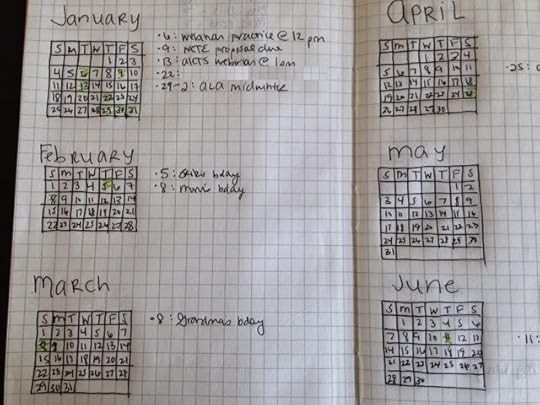
At the beginning of each month, I write out a rough events calendar:
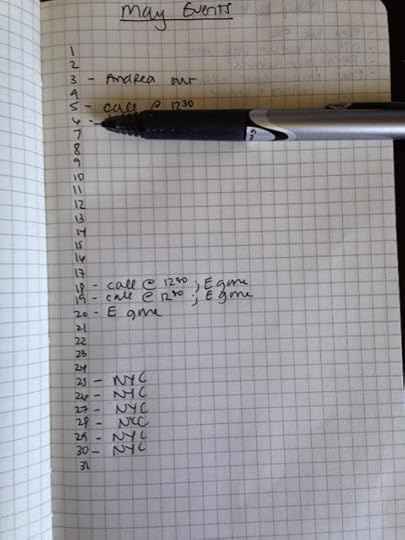
This is nothing more than the dates of the month on the left, along with events or important things I ned to remember beside it. On dates with more than one event, I just separate them but put them all on the same line.
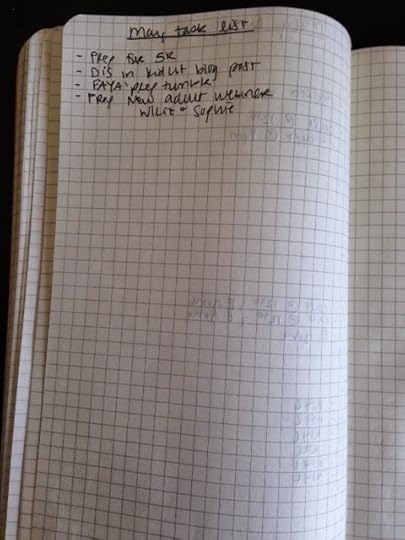
On the next page, I keep a single-page monthly task list. This is a list of things I need to do during the month that don't necessarily have a due date or need to be done by a certain point. I refer back to this every day when I'm working on my daily task lists (getting there in a minute) in order to build those daily to-dos.
Following those pages, I like to make myself a place to track my monthly workouts. Some people do things like Fit Bit or Polar Vortex (which isn't the real name, but that's what I call my husband's fancy tracker). I think I've made it clear I'm a paper person.
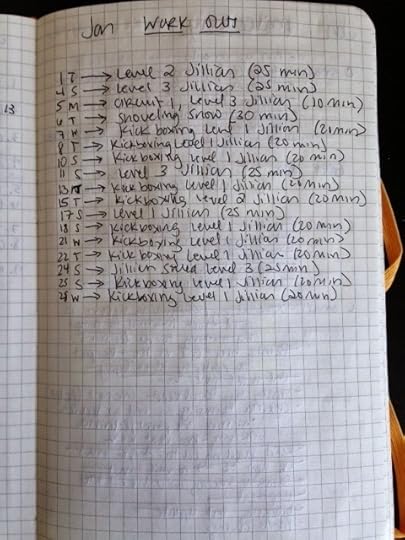
Following those three key pages, I then flip to the following page for a two-page spread which becomes a place where I keep track of two things during the month: blog post ideas, as well as books I've read and books I'd like to read that month. I don't get to everything on the "to read" list, but that's become a way for me to keep up with what I've been thinking about or wanting to read so when I do finish something and wonder what next, I have a place to turn.
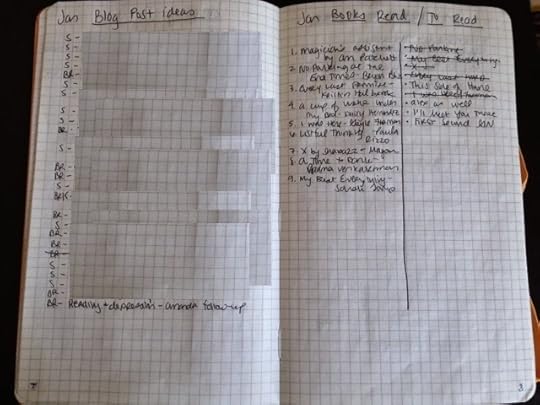
After that, I give myself 3-5 pages which I've so creatively titled "miscellaneous." This is where all of my monthly catch-all to-dos, lists, and other things I can't forget or want to refer back to end up. Sometimes it's literally a note about something I need to mention in an email or it's an address. Something I don't want to lose or misplace and would want to maybe refer back to at some point. I didn't include pictures because all of those pages have personal stuff on them, but the important part for me is they exist and they're there before the daily task lists.
One of the key features of bullet journaling per the video is that people can use a special key to track their events and tasks. This...does not work for me. Instead, I make a running agenda for every single day and mark things off as I go. For important things, like an appointment or call I have to attend to, I usually put a star to note that to myself. Otherwise, it's a straight list, and I keep the daily task lists to half of a page. That's all I can reasonably do in a day. Or rather, it's all I expect myself to try to accomplish in a day that needs to get written down. Some things are so routine, I don't need to mark them.
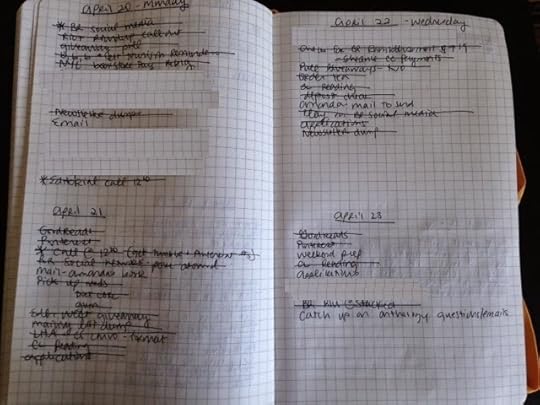
Generally, I write out a week of dates at a time. Sometimes I'll go further. I don't usually put the day of the week beside the date, but I have done that to keep track periodically. What's been key for me here is this: I list things I need to do, or a memory cue for them (like "Pinterest" and "Goodreads," which are things I do for Book Riot) and I mark them off as I accomplish them. When I see there are things being unmarked and unaccomplished, I move them to the next day.
Some people believe in very specific tasks being written. I alternate between specific tasks ("Write a Tumblr post for work about this event doing this") and cues ("Goodreads," which simply means do a few things on Goodreads that need to be done that day). It works for me because some things require specific information and other things do not.
If things don't get done within a week or so -- depending on what the task or memory cue is -- I reevaluate the task. Do I need to do it? Will I do it? Or is it taking up unnecessary space in my life and it's time to let go? If something isn't on my monthly task list and has just been taking up space on my calendar, it's time to either do the task (like go to the post office, which is a notorious one I hold over) or get rid of it and not think about it again.
By keeping my daily task lists to a week or so planned out, I force myself to make these decisions regularly. I don't have time to waste writing things down again and again if I'm really not going to do them or if it's a thing I just need to do and finish.
I keep all of my to-do list in one space. I do not separate out work tasks from personal tasks. I am very good at budgeting my time and energy during the day, so I know how to proceed with those multiple sides to my daily life. I practice energy management as opposed to time management, which I know is a touchy-feely way of getting things done, but it works for me. And since I work from home with an unconventional schedule, I find this method of taking care of things every day really works for me. Basically, I don't plot things out in time chunks. I plot them out by energy. I know I am more likely to get certain things done in the morning and other things done mid-day. So I look at my lists every day and go from there. (This also tends to be why I am generally very fast at responding to emails or messages I get: as soon as I have the energy for it, I'm tackling it, rather than planning to go at it in one period of time.)
And that's all.
I don't do anything else with my bullet journal. I have no fancy secrets or knobs or gadgets. I use the same black ink Pilot pen on every single page. I reevaluate the monthly task lists as I go, and sometimes things get knocked off when they're accomplished or I know it's not going to happen.
I'm sold on this method of tracking my life because it's analog and because I love having both the feeling of accomplishment that comes with marking things off and seeing how much can and cannot get done. More, I have a lot of opportunities to make choices with my time more regularly now that I see how my energy works with me, rather than against me. As a person who has to have control in her life, this is the biggest benefit. I know when and how I can get things done when I see it like this.
Keeping a record of books read, workouts finished, and blog post ideas keeps me motivated. I like seeing those pages full visually. And it's always nice to know there's a pile of blog post ideas sitting in line when I feel like I have nothing to work with when I sit down to write.
My bullet journaling came from trial and error, looking at what other people were doing and what would work for my own life. If it's something that appeals to you but feels overwhelming, I cannot emphasize looking around at how others adapt them and then doing the same for yourself. I started with some idealistic notions on what I'd do with this, but then I let them die away as I realized the key component of bullet journaling for me, aside from organization, was decision making. Where do I invest my time and where do I let things go?
Other resources for getting started in bullet journaling:
Maureen wrote about her own personal methods of bullet journaling earlier this year. As you'll see we all have methods that work for us. The beauty of bullet journaling is the adaptability of the format.
There's also a Facebook group for bullet journaling. You can hop in and show off, ask questions, and get ideas for how other people use their journals here.
Bullet journal ideas and examples from Pinterest to get you started.







 Related StoriesAbout The Girls Around The WebOn (Not) Reading Science Fiction as a Teenage GirlOn Curiosity: Guest Post by Jordan Brown
Related StoriesAbout The Girls Around The WebOn (Not) Reading Science Fiction as a Teenage GirlOn Curiosity: Guest Post by Jordan Brown
Published on April 29, 2015 22:00
April 28, 2015
It's Prom Season: A YA Reading List
It's prom season!
Way back in 2011 -- a mere 4 years ago -- I put together a prom-related YA book list. Since then, there has been a wave of more prom books that hit shelves; it seems like every year we get a handful, and they tackle this teen rite of passage in unique and interesting ways. Even in the years since I graduated high school, prom has become a bigger, more expansive, and more stressful (promposals!) experience for teenagers. It's an industry unto itself.
I've talked about my own prom experience before, and someday, I hope there are even more stories about teens who decide to ditch the dance in favor of alternate plans. More interesting, though less surprising, is how few tales of the prom feature characters of color, have a primarily male-focused point of view, or feature LGBTQ characters (though we're seeing a few more of these). There are some, but certainly the bulk of the prom books out there are very female and very white. If you can think of titles that fall into these categories, even if it's a smaller plot point and not the focus of the book itself, I'd love to hear.
Dig into these tales of prom, published since 2011. All descriptions are from WorldCat, and if I've missed something, let me know in the comments.
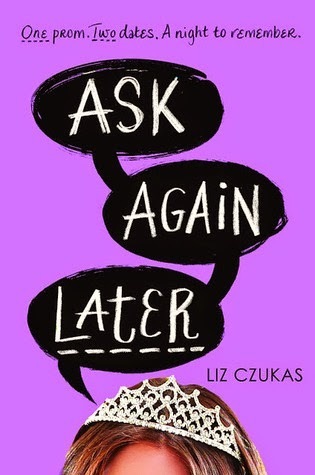
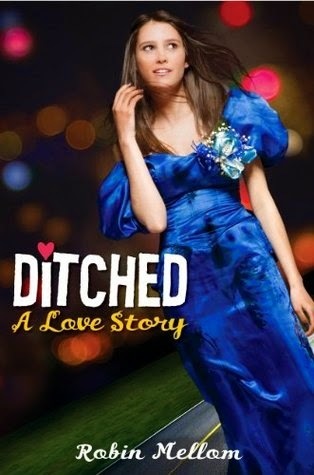
Ask Again Later by Liz Czukas: Instead of a "No Drama Prom-a" with a group of friends, seventeen-year-old Heart LaCoeur must choose between two boys with good reasons for asking her, but a flip of a coin leads not to one date but two complete--and very different--prom nights.
Ditched: A Love Story by Robin Mellom: When high school student Justina ends up in a ditch in the middle of the night after prom, she stumbles to a nearby 7-Eleven where she tries to recall exactly how she got there.
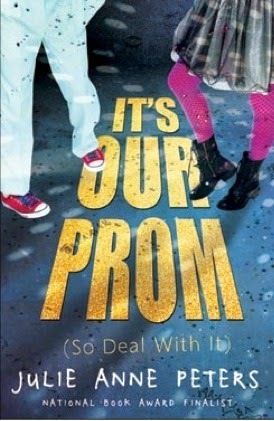
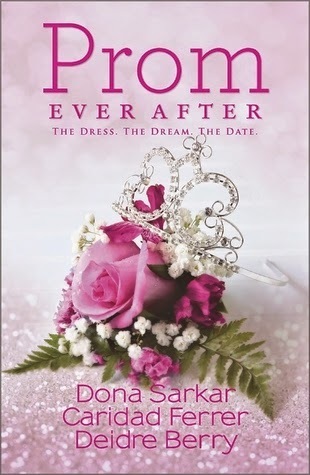
It's Our Prom (So Deal With It) by Julie Anne Peters: Told in separate voices, Azure, who is a lesbian, and Luke, who is bisexual, help plan an inclusive senior prom while Luke is writing and producing a musical about his life, both are working through the crush they have on their friend Radhika, and all three are dealing with problems at home.
Prom Ever After by Dona Sarkar, Caridad Ferrer, and Diedre Berry: Prom night is finally here. Three girls will find that the biggest night of high school can also be the most surprising.
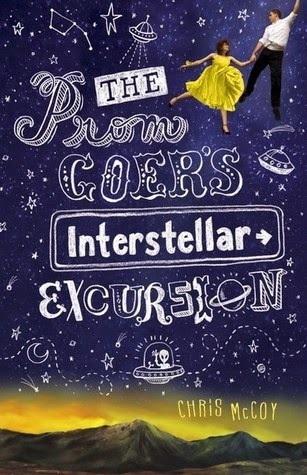
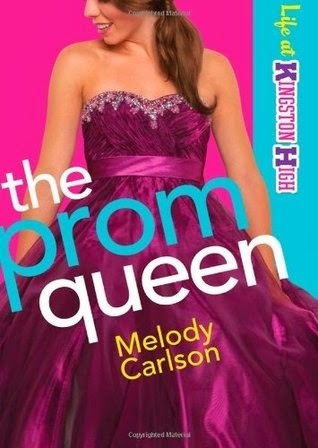
The Prom Goer's Interstellar Excursion by Chris McCoy: Minutes after eighteen-year-old Bennett Bardo of Gordo, New Mexico, asks Sophie Gilkey, his dream girl, to prom and she says yes, she's abducted by aliens and Bennett catches a ride across the galaxy with a band of misfit musicians to find her.
(An alien abduction prom story? Yes, please!)
The Prom Queen by Melody Carlson: Life gets more and more complicated for a high school girl who decides to do whatever it takes to be elected as prom queen.
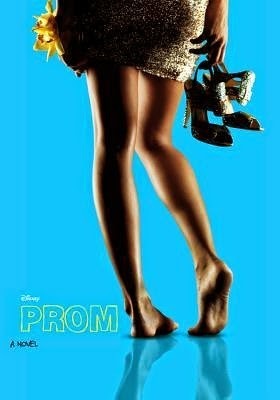
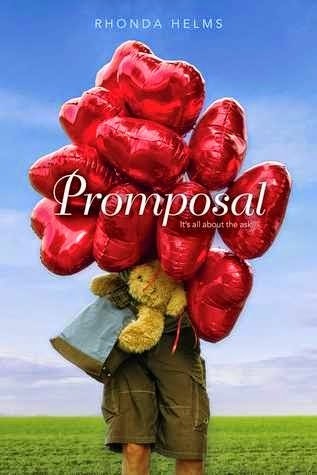
Prom by Ellie O'Ryan (novel based on the movie): Nova Prescott is the president of this year's Prom Committee at Brookside High. After an accidental fire causes the prom decorations to go up in smoke, Jesse Richter is enlisted by the principal to do so community service and help Nova repair the damage. Will Nova go to the dance with Jesse (to whom she is attracted), or with Brandon Roberts (with whom Nova had wanted for ages to go to the prom)?
Promposal by Rhonda Helms: Camilla hopes her secret crush, Benjamin, might ask her to prom but feels pressured into accepting the invitation of a casual acquaintance, and Joshua has worked up the courage to ask his best friend, Ethan, to be his date when Ethan asks his help in crafting the perfect "promposal" for another boy.
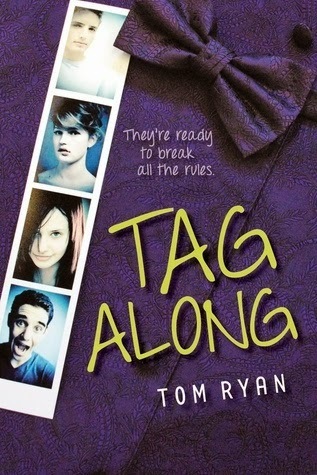
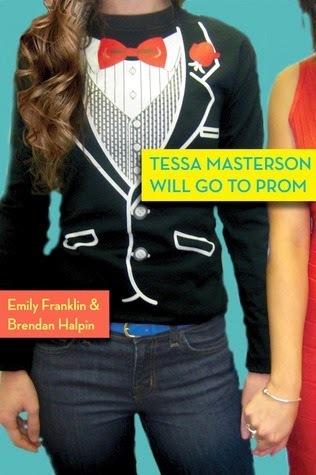
Tag Along by Tom Ryan: It's junior prom night. Andrea is grounded for getting her older brother to buy booze for her, Paul is having panic attacks, Roemi has been stood up by his Internet date, and Candace is busy tagging a building (before she gets collared by a particularly tenacious cop). By happenstance, the four near-strangers end up together, getting into more trouble, arguing and ultimately helping each other out over the course of eight madcap hours.
Tessa Masterson Will Go To Prom by Emily Franklin & Brendan Halpin: Feeling humiliated and confused when his best friend Tessa rejects his love and reveals a long-held secret , high school senior Luke must decide if he should stand by Tessa when she invites a female date to the prom, sparking a firestorm of controversy in their small Indiana town.






 Related StoriesApril Debut YA Novels2015 YA Novels in Verse: A Book ListThree Quick Reviews + a free TLA Program
Related StoriesApril Debut YA Novels2015 YA Novels in Verse: A Book ListThree Quick Reviews + a free TLA Program
Way back in 2011 -- a mere 4 years ago -- I put together a prom-related YA book list. Since then, there has been a wave of more prom books that hit shelves; it seems like every year we get a handful, and they tackle this teen rite of passage in unique and interesting ways. Even in the years since I graduated high school, prom has become a bigger, more expansive, and more stressful (promposals!) experience for teenagers. It's an industry unto itself.
I've talked about my own prom experience before, and someday, I hope there are even more stories about teens who decide to ditch the dance in favor of alternate plans. More interesting, though less surprising, is how few tales of the prom feature characters of color, have a primarily male-focused point of view, or feature LGBTQ characters (though we're seeing a few more of these). There are some, but certainly the bulk of the prom books out there are very female and very white. If you can think of titles that fall into these categories, even if it's a smaller plot point and not the focus of the book itself, I'd love to hear.
Dig into these tales of prom, published since 2011. All descriptions are from WorldCat, and if I've missed something, let me know in the comments.


Ask Again Later by Liz Czukas: Instead of a "No Drama Prom-a" with a group of friends, seventeen-year-old Heart LaCoeur must choose between two boys with good reasons for asking her, but a flip of a coin leads not to one date but two complete--and very different--prom nights.
Ditched: A Love Story by Robin Mellom: When high school student Justina ends up in a ditch in the middle of the night after prom, she stumbles to a nearby 7-Eleven where she tries to recall exactly how she got there.


It's Our Prom (So Deal With It) by Julie Anne Peters: Told in separate voices, Azure, who is a lesbian, and Luke, who is bisexual, help plan an inclusive senior prom while Luke is writing and producing a musical about his life, both are working through the crush they have on their friend Radhika, and all three are dealing with problems at home.
Prom Ever After by Dona Sarkar, Caridad Ferrer, and Diedre Berry: Prom night is finally here. Three girls will find that the biggest night of high school can also be the most surprising.


The Prom Goer's Interstellar Excursion by Chris McCoy: Minutes after eighteen-year-old Bennett Bardo of Gordo, New Mexico, asks Sophie Gilkey, his dream girl, to prom and she says yes, she's abducted by aliens and Bennett catches a ride across the galaxy with a band of misfit musicians to find her.
(An alien abduction prom story? Yes, please!)
The Prom Queen by Melody Carlson: Life gets more and more complicated for a high school girl who decides to do whatever it takes to be elected as prom queen.


Prom by Ellie O'Ryan (novel based on the movie): Nova Prescott is the president of this year's Prom Committee at Brookside High. After an accidental fire causes the prom decorations to go up in smoke, Jesse Richter is enlisted by the principal to do so community service and help Nova repair the damage. Will Nova go to the dance with Jesse (to whom she is attracted), or with Brandon Roberts (with whom Nova had wanted for ages to go to the prom)?
Promposal by Rhonda Helms: Camilla hopes her secret crush, Benjamin, might ask her to prom but feels pressured into accepting the invitation of a casual acquaintance, and Joshua has worked up the courage to ask his best friend, Ethan, to be his date when Ethan asks his help in crafting the perfect "promposal" for another boy.


Tag Along by Tom Ryan: It's junior prom night. Andrea is grounded for getting her older brother to buy booze for her, Paul is having panic attacks, Roemi has been stood up by his Internet date, and Candace is busy tagging a building (before she gets collared by a particularly tenacious cop). By happenstance, the four near-strangers end up together, getting into more trouble, arguing and ultimately helping each other out over the course of eight madcap hours.
Tessa Masterson Will Go To Prom by Emily Franklin & Brendan Halpin: Feeling humiliated and confused when his best friend Tessa rejects his love and reveals a long-held secret , high school senior Luke must decide if he should stand by Tessa when she invites a female date to the prom, sparking a firestorm of controversy in their small Indiana town.







 Related StoriesApril Debut YA Novels2015 YA Novels in Verse: A Book ListThree Quick Reviews + a free TLA Program
Related StoriesApril Debut YA Novels2015 YA Novels in Verse: A Book ListThree Quick Reviews + a free TLA Program
Published on April 28, 2015 22:00
April 27, 2015
A Few Bookish Things
A few bookish things making me happy on the internet recently:
1. The Bridgertons are back in 2016. I have no idea if this means novels, novellas, or something else entirely, but it's exciting regardless.
 via Julia Quinn's website2. An historical romance novel by Courtney Milan featuring an Asian protagonist. Yes, please. It's the third in a series and the first isn't yet published (it's coming out in May), but I bet all of them will be good.
via Julia Quinn's website2. An historical romance novel by Courtney Milan featuring an Asian protagonist. Yes, please. It's the third in a series and the first isn't yet published (it's coming out in May), but I bet all of them will be good.
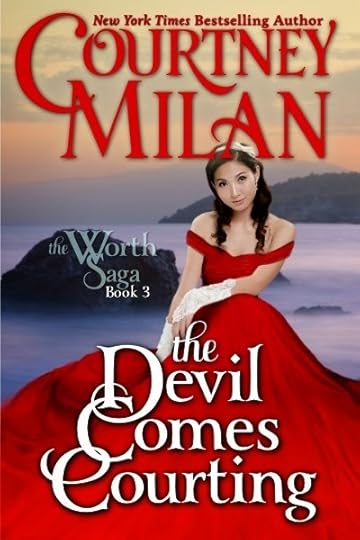 via Courtney Milan's website3. A flowchart I created for my library's Tumblr was picked up by this Buzzfeed article: 15 Insanely Useful Diagrams for Book Lovers.
via Courtney Milan's website3. A flowchart I created for my library's Tumblr was picked up by this Buzzfeed article: 15 Insanely Useful Diagrams for Book Lovers.
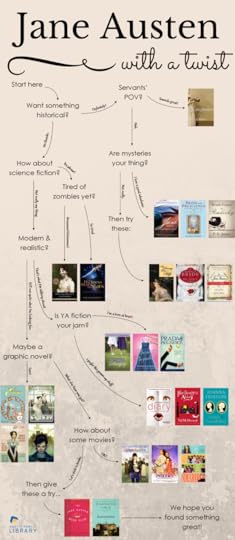 via Buzzfeed4. Lindy West is writing a coming of age memoir called Shrill.
via Buzzfeed4. Lindy West is writing a coming of age memoir called Shrill.
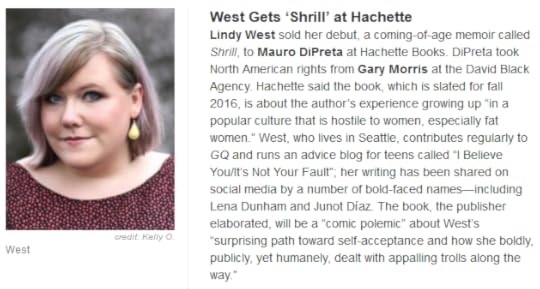 via Publishers Weekly
via Publishers Weekly







1. The Bridgertons are back in 2016. I have no idea if this means novels, novellas, or something else entirely, but it's exciting regardless.
 via Julia Quinn's website2. An historical romance novel by Courtney Milan featuring an Asian protagonist. Yes, please. It's the third in a series and the first isn't yet published (it's coming out in May), but I bet all of them will be good.
via Julia Quinn's website2. An historical romance novel by Courtney Milan featuring an Asian protagonist. Yes, please. It's the third in a series and the first isn't yet published (it's coming out in May), but I bet all of them will be good. via Courtney Milan's website3. A flowchart I created for my library's Tumblr was picked up by this Buzzfeed article: 15 Insanely Useful Diagrams for Book Lovers.
via Courtney Milan's website3. A flowchart I created for my library's Tumblr was picked up by this Buzzfeed article: 15 Insanely Useful Diagrams for Book Lovers. via Buzzfeed4. Lindy West is writing a coming of age memoir called Shrill.
via Buzzfeed4. Lindy West is writing a coming of age memoir called Shrill. via Publishers Weekly
via Publishers Weekly







Published on April 27, 2015 22:00
April 26, 2015
April Debut YA Novels
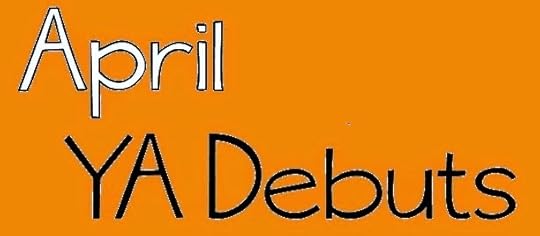
It's time for another round-up of debut YA novels of the month.
Like always, this round-up includes debut novels, where "debut" is in its purest definition. These are first-time books by first-time authors. I'm not including books by authors who are using or have used a pseudonym in the past or those who have written in other categories (adult, middle grade, etc.) in the past.
All descriptions are from WorldCat, unless otherwise noted. If I'm missing any debuts out in February from traditional publishers, let me know in the comments. As always, not all noted titles included here are necessarily endorsements for those titles.
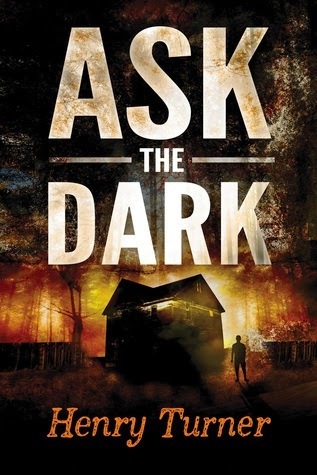
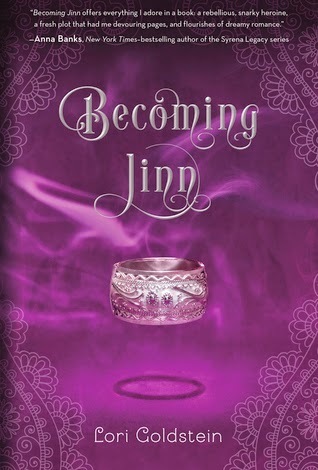
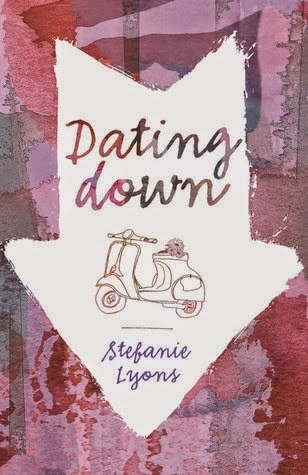
Ask The Dark by Henry Turner: A thriller about Billy Zeets, a 14-year-old semi-delinquent in a deadly tango with a killer.
Becoming Jinn by Lori Goldstein: Behind closed doors, sixteen-year-old Azra is learning how to harness her powers and fulfill the obligations of her destiny. Mentored by her mother and her Zar "sisters," Azra discovers she may not be quite like the rest of her circle of female Jinn ... and that her powers could endanger them all.
Dating Down by Stefanie Lyons: Seventeen-year-old aspiring artist Samantha Henderson, eager to learn about life and to get away from her father's political campaigns and her stepmother, refuses to give up on her new boyfriend, "X," even after he proves to be trouble, damaging her friendships and introducing her to drugs.
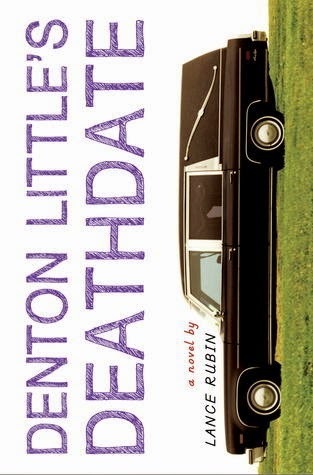
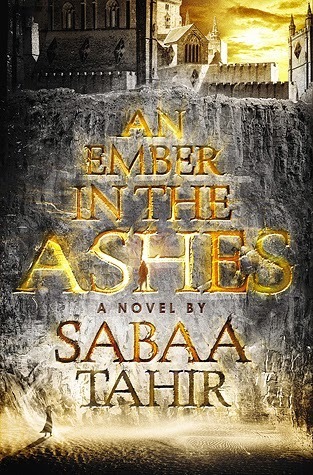
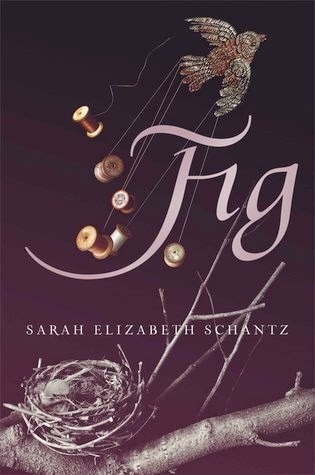
Denton Little's Deathdate by Lance Rubin: In a world where everyone knows the day they will die, a teenage boy is determined to outlive his upcoming expiration date.
An Ember in the Ashes by Sabaa Tahir: Laia is a Scholar living under the iron-fisted rule of the Martial Empire. When her brother is arrested for treason, Laia goes undercover as a slave at the empire's greatest military academy in exchange for assistance from rebel Scholars who claim that they will help to save her brother from execution.
Fig by Sarah Elizabeth Schantz: In 1994, Fig looks back on her life and relates her experiences, from age six to nineteen, as she desperately tries to save her mother from schizophrenia while her own mental health and relationships deteriorate.
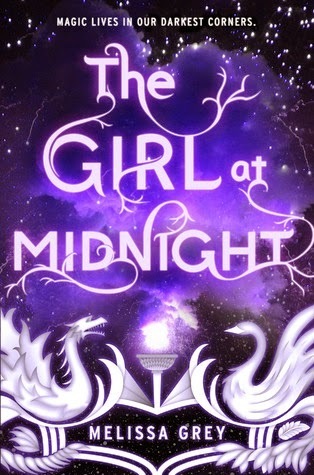
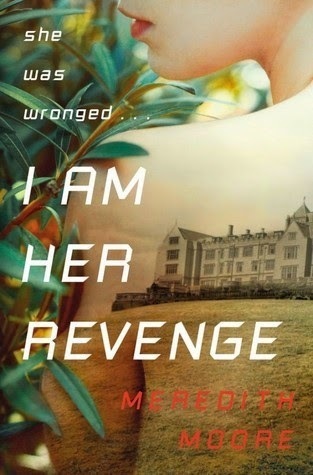
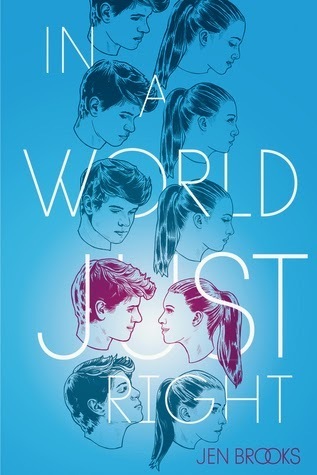
The Girl at Midnight by Melissa Grey: A girl who's adopted and raised by a race of creatures with feathers for hair and magic in their veins becomes involved in an ancient war and a centuries-old love, discovering startling truths about the world she lives in.
I Am Her Revenge by Meredith Moore: Enrolled at an English boarding school, Vivian targets an innocent senior as part of a revenge plot her manipulative mother devised, but as the plan's set into motion, Vivian starts to uncover secrets so dark and deadly they threaten to unravel the deceptive being that Mother worked so hard to create.
In A World Just Right by Jen Brooks: Eighteen-year-old Jonathan Aubrey, a scarred loner, escapes at will into other worlds of his making, but suddenly the world in which a popular girl is his long-term girlfriend is intersecting reality in startling ways.
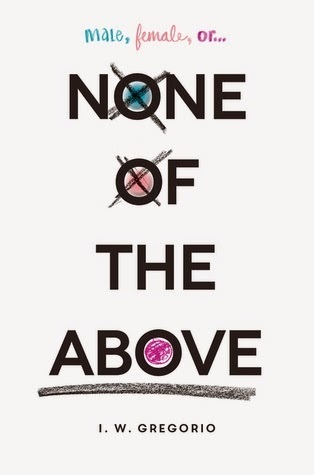
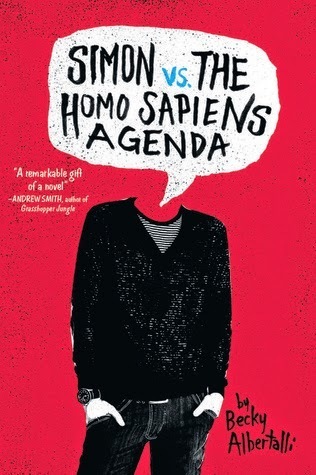
None of the Above by I. W. Gregorio: A groundbreaking story about a teenage girl who discovers she's intersex...and what happens when her secret is revealed to the entire school. Incredibly compelling and sensitively told, None of the Above is a thought-provoking novel that explores what it means to be a boy, a girl, or something in between. Reviewed here.
Simon vs. The Homo Sapiens Agenda by Becky Albertalli: Sixteen-year-old and not-so-openly gay Simon Spier prefers to save his drama for the school musical. But when an email falls into the wrong hands, his secret is at risk of being thrust into the spotlight. Now Simon is actually being blackmailed: if he doesn't play wingman for class clown Martin, his sexual identity will become everyone's business. Worse, the privacy of Blue, the pen name of the boy he's been emailing, will be compromised. With some messy dynamics emerging in his once tight-knit group of friends, and his email correspondence with Blue growing more flirtatious every day, Simon's junior year has suddenly gotten all kinds of complicated. Now, change-averse Simon has to find a way to step out of his comfort zone before he's pushed out -- without alienating his friends, compromising himself, or fumbling a shot at happiness with the most confusing, adorable guy he's never met. Reviewed here.
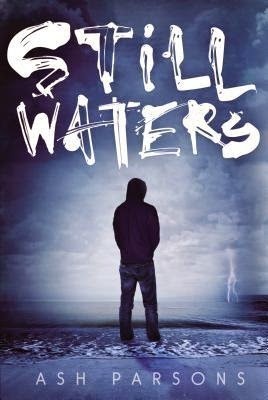
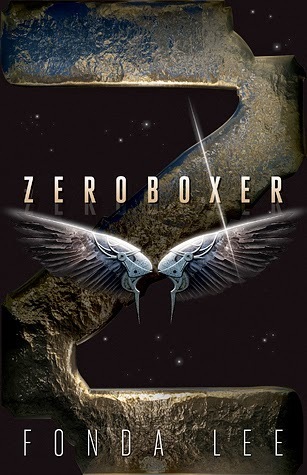
Still Waters by Ash Parsons: High-schooler Jason, who lives with a drunk, abusive father at home, hopes to earn enough money to escape with his younger sister, Janie, by being tough at school, but the stakes grow ever more dangerous and soon even his fists and ability to think on his feet are not enough to keep his head above water.
Zeroboxer by Fonda Lee: As seventeen-year-old Carr 'the Raptor' Luka rises to fame in the weightless combat sport of zeroboxing, he learns a devastating secret that jeopardizes not only his future in the sport, but interplanetary relations







 Related StoriesMarch Debut YA NovelsFebruary Debut YA NovelsJanuary Debut YA Novels
Related StoriesMarch Debut YA NovelsFebruary Debut YA NovelsJanuary Debut YA Novels
Published on April 26, 2015 22:00
April 23, 2015
This Week at Book Riot
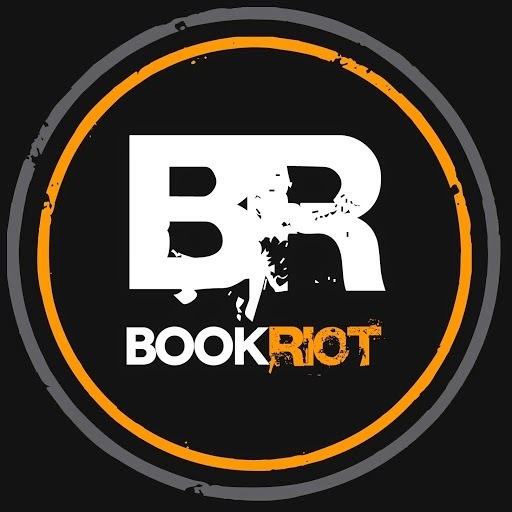
Over at Book Riot this week:
I had the immense privilege of having a conversation with Laurie Halse Anderson and Courtney Summers about sexual violence, feminism, and the power of girls' stories. This interview is one I am so proud of and am honored to have been able to do.
For 3 on a YA theme, a short round-up of verse novels.







 Related StoriesThis Week on Book RiotRecently on Book Riot and ElsewhereThis Week at Book Riot
Related StoriesThis Week on Book RiotRecently on Book Riot and ElsewhereThis Week at Book Riot
Published on April 23, 2015 22:00
April 22, 2015
All The Rage by Courtney Summers: Blog Tour and Giveaway
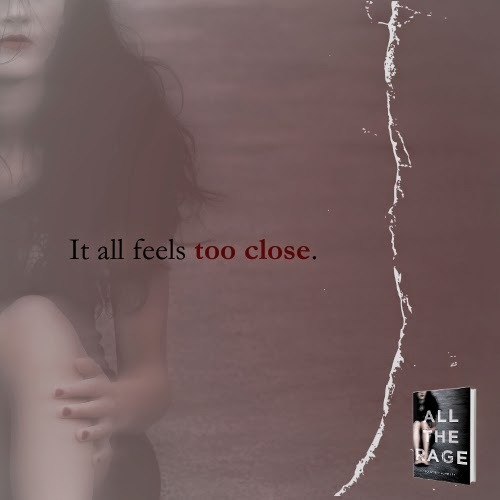
I've talked a bit about All The Rage by Courtney Summers here prior to its release. Now that it's out, we're taking part in the blog tour for the book -- because Courtney is a friend, I won't review the book, but I wanted to talk about why it's one you need to read and talk a bit about the quote above.
One of the big images throughout the book is that of red lipstick and red nail polish. They're the main character Romy's armor; they're a way of her having a ritual and control in a world where
There's a moment when the pair of school mannequins, which are there for school spirit, become a means for Romy's peers to bully her. In one scene, the Jane mannequin has her lips colored in red, so there's no doubt she's being used as a means to mocking Romy. When Romy sees this -- and she anticipates a certain level of being made fun of and ridiculed because she's the girl who dared speak up about the school's golden boy who raped her -- she tries to scrape off the color.
Romy's former best friend Penny watches this happen, and it's when Romy catches her watching on, she feels not only betrayed, but she feels a thousand knives of betrayal. She decides then and there she can't handle being at school any longer, so she leaves and goes home.
The quote above, "It all feels too close," is when she gets home and she can't make up her mind about what to do. Everything claws at her at once: wanting to hide away in her room -- one that doesn't feel like hers yet, since she and her mother have just moved into a place with Todd, her mother's romantic other -- and wanting to flee and put space between her and the world she inhabits. Here's the entire passage:
I stand in the sun porch and the quiet pulls at me, and different parts of me want different things. There’s the part of me that wants to go inside and sleep. There’s the part of me that wants space, distance, because it all feels too close.
The part of me that wants to go is louder.
This may feel small, but it's a huge piece throughout the book and ultimately, swings back to the conclusion of the book, too. What Romy feels is this constant push and pull, but it's the desire to go -- to step outside her own situation and her own skin and her own place of hiding -- that seems to be louder.
***
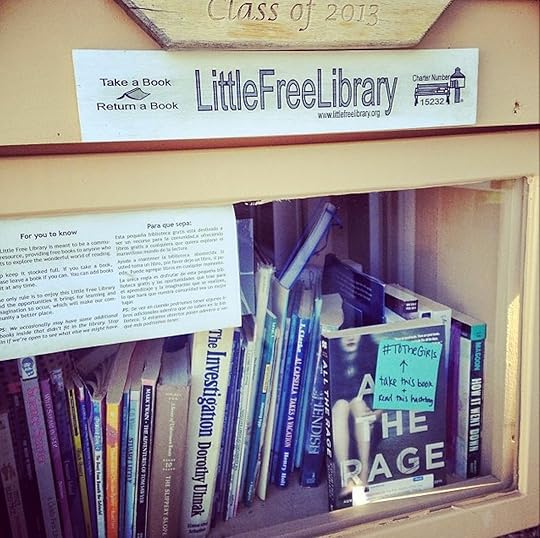 The biggest theme running through Summers's book is the importance of believing girls. By believing them, we let them speak their truths. We hear their stories, however raw and painful they may be. And the more we hear them, the more we let their voices stand. The more we then, in turn, believe their voices even more.
The biggest theme running through Summers's book is the importance of believing girls. By believing them, we let them speak their truths. We hear their stories, however raw and painful they may be. And the more we hear them, the more we let their voices stand. The more we then, in turn, believe their voices even more.To celebrate the release of All The Rage, Courtney created a hashtag campaign aimed at offering insight, advice, and voice to girls everywhere in #ToTheGirls. For those who may have missed it as it trended worldwide, there have been nice write ups in the New York Times, BlogHer, the Huffington Post, MTV, and a shout out on The Today Show. This is well-worth sharing with teenagers, as the advice shared here is powerful, moving, and could be life-changing. I ended up dropping off the spare ARC I had of the book into the local Little Free Library, which is located between the middle school and high school, with a note about the hash tag, hoping a girl sees it, reads it, and is moved by it.
This month, I had the honor and privilege of having Courtney Summers in conversation with the legendary Laurie Halse Anderson on the topics of feminism, sexual violence, and the importance of girls' stories. Please read this -- both women are phenomenally passionate, well-spoken, and what they have to say can, and will, change lives.
***
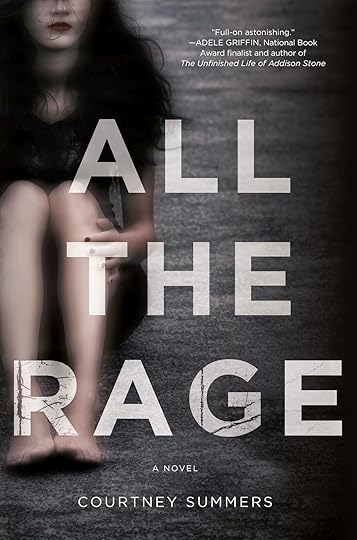
Thanks to St. Martin's Press, I've got a copy of All The Rage to give away to one lucky winner in the US or Canada. Here's the official description:
The sheriff's son, Kellan Turner, is not the golden boy everyone thinks he is, and Romy Grey knows that for a fact. Because no one wants to believe a girl from the wrong side of town, the truth about him has cost her everything-friends, family, and her community. Branded a liar and bullied relentlessly by a group of kids she used to hang out with, Romy's only refuge is the diner where she works outside of town. No one knows her name or her past there; she can finally be anonymous. But when a girl with ties to both Romy and Kellan goes missing after a party, and news of him assaulting another girl in a town close by gets out, Romy must decide whether she wants to fight or carry the burden of knowing more girls could get hurt if she doesn't speak up. Nobody believed her the first time-and they certainly won't now-but the cost of her silence might be more than she can bear.
With a shocking conclusion and writing that will absolutely knock you out, All the Rage examines the shame and silence inflicted upon young women in a culture that refuses to protect them.
I'll select a winner on or around May 5.
Loading...







 Related StoriesSix Years of STACKEDGiveaway: All The Rage by Courtney SummersReview & Giveaway: Loop by Karen Akins
Related StoriesSix Years of STACKEDGiveaway: All The Rage by Courtney SummersReview & Giveaway: Loop by Karen Akins
Published on April 22, 2015 22:00
April 21, 2015
Cult Memoirs
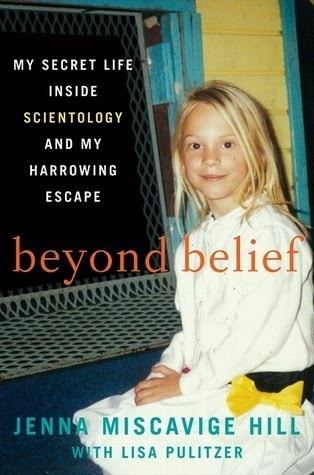
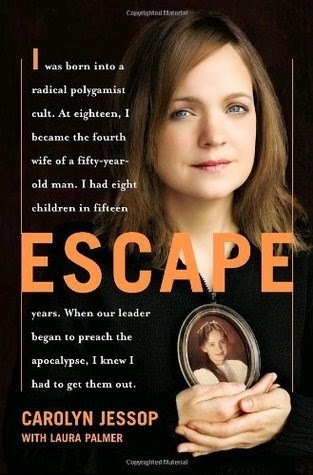
After listening to Lawrence Wright's Going Clear , I decided to dig into these two memoirs - one about Scientology, one about the Fundamentalist Church of Jesus Christ of Latter Day Saints (FLDS). I had begun Jessop's Escape in print several years ago but never finished. (In my early 20s I often checked out lots of interesting nonfiction from the library and then never read it.) I have an interest in first-person accounts of fringe religions/cults (like many of us do, I'm sure). Raised without a religion, I've always been intrigued by what people believe and why they believe it, as well as where that line between a religion and a cult actually lies.
Beyond Belief: My Secret Life Inside Scientology and My Harrowing Escape by Jenna Miscavige Hill with Lisa Pulitzer
Jenna Miscavige Hill is the niece of David Miscavige and was born into Scientology, trained from a young age to join the Sea Org. She fled Scientology in her early 20s and wrote this book about her experiences growing up in the religion. Much of what she discusses is covered in Wright's book, but getting it from a first person point of view is valuable.
Although Hill was related to the most powerful man in the religion, this was a mixed blessing. At times it seemed she was given preferential treatment (allowed to visit her mother and stay in a relatively nice hotel while others in the Sea Org were not); at others, it seemed she was blamed for it (punished for asking for something she had always gotten before, not realizing it wasn't standard). What struck me most about Hill's story was the manipulation and mind games played by Scientologists with power. Frequently, Hill was called in for "security checks" that lasted hours. She was made to answer personal questions and often felt like she was being disciplined for an unknown infraction. Sometimes she'd discover that it was her parents who had misbehaved; often the reasons remained unknown. Particularly startling are Hill's statements as to how infrequently she saw her parents (half a dozen times in as many years) and how little supervision is exercised over young children. For example, one of Jenna's jobs as a pre-teen was to administer medical care to all the other children in training for the Sea Org. There was no adult back-up.
The "harrowing" part of the subtitle is a little misleading when compared with Carolyn Jessop's account of her escape from the FLDS (below). This is partly due to Hill's writing, which is simplistic and very event-based. She describes her feelings, but mostly this is a straightforward account of what happened, and then what happened next. The events themselves are interesting enough, but it's not among the most riveting memoirs I've read. (Interestingly, neither of these two memoirs were narrated by their authors.)
Escape by Carolyn Jessop
Jessop's account of her life in the FLDS and her escape at age 35 after over a decade of marriage with a man over 30 years her senior is riveting and horrifying, just as the accounts of Scientology are. She had eight kids at the time of her escape, including one who was profoundly disabled. She managed to escape with all of them and received full custody of them. She tells of rampant abuse, both physical and psychological. I expected that her husband would be horrible, and he was, going so far as to deny life-saving medical care to one of Carolyn's children in order to punish her. What I didn't expect was just how horrible her "sister wives" were as well. One of the wives was clearly the dominant one in her husband's affections and used that power to manipulate and harm the other wives and their children. It ranged from little things, like not allowing the other wives time to use the washer and dryer, to more extreme things like preventing enough money to be given for the purchase of food.
In some ways, members of the FLDS are harder to understand than Scientologists - perhaps because of the way they dress. At first glance, Scientology doesn't seem harmful as much as it seems just weird and a place for gullible people to get fleeced of all their money. The FLDS is definitely more blatantly awful, particularly for women (but not only for them).
As memoirs go, Escape is better-written than Hill's Beyond Belief. The people in Jessop's story have personality and depth, even those who were sometimes cruel to her. She delves deep into her reasons for believing and staying in the FLDS as long as she did. While both Hill and Jessop were born into their respective religions, the FLDS doesn't really accept newcomers as Scientology goes. The FLDS needs to get them from birth and keep them isolated, and that's exactly what happened with Jessop. Unlike Scientology, there doesn't seem to be much to appeal to someone raised outside the FLDS. Even as she came to realize that her husband and those in power were not good people, Jessop believed in her religion. This creates sympathy for her daughter, Betty, who returned to the FLDS when she turned 18.
Next on my list: Jon Krakauer's Under the Banner of Heaven .
Both books borrowed from my local library.







 Related StoriesGoing Clear: Scientology, Hollywood, and the Prison of Belief by Lawrence WrightGet Genrefied: YA Urban FantasyA Pair of Audiobook Reviews
Related StoriesGoing Clear: Scientology, Hollywood, and the Prison of Belief by Lawrence WrightGet Genrefied: YA Urban FantasyA Pair of Audiobook Reviews
Published on April 21, 2015 22:00



